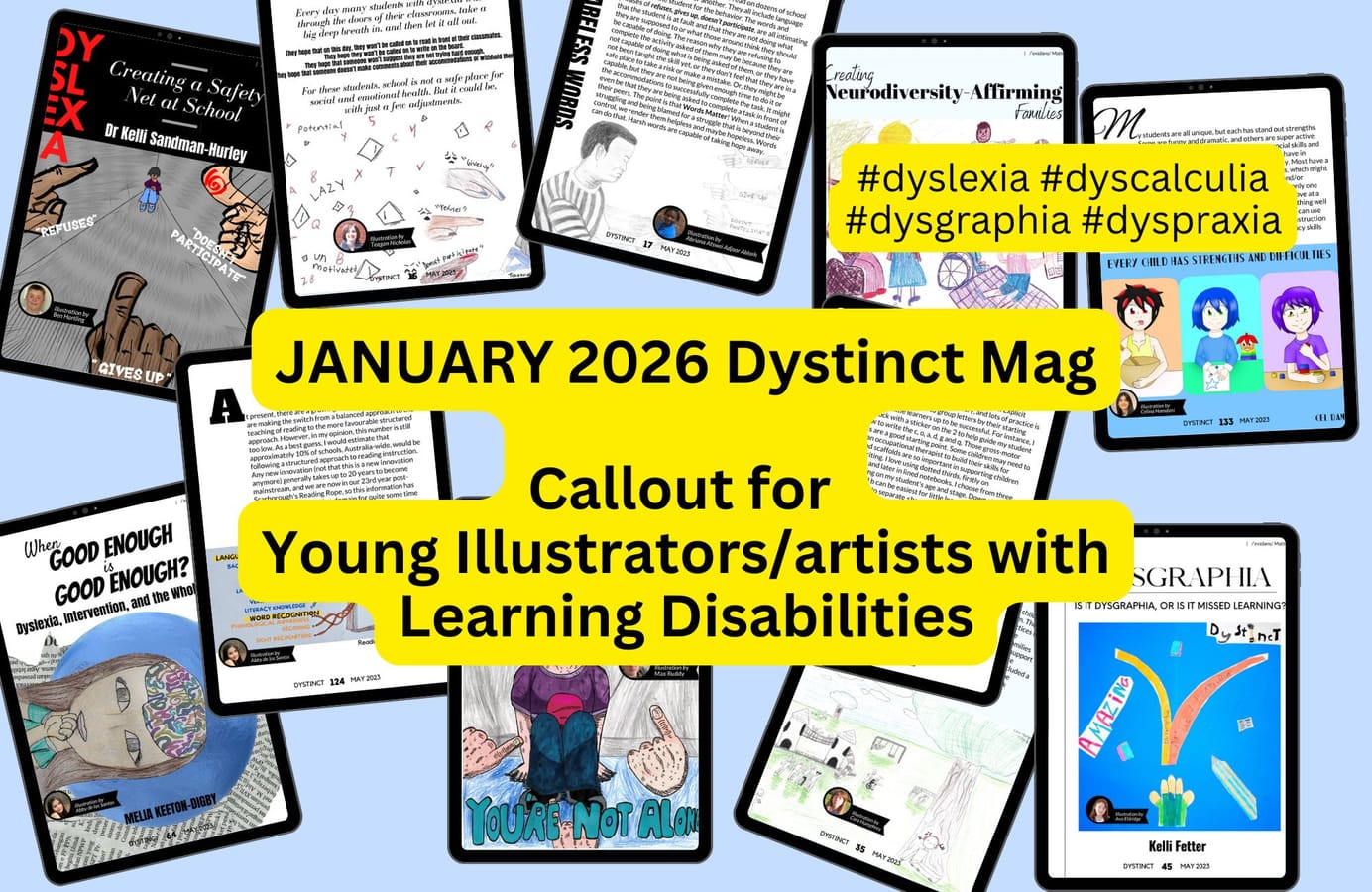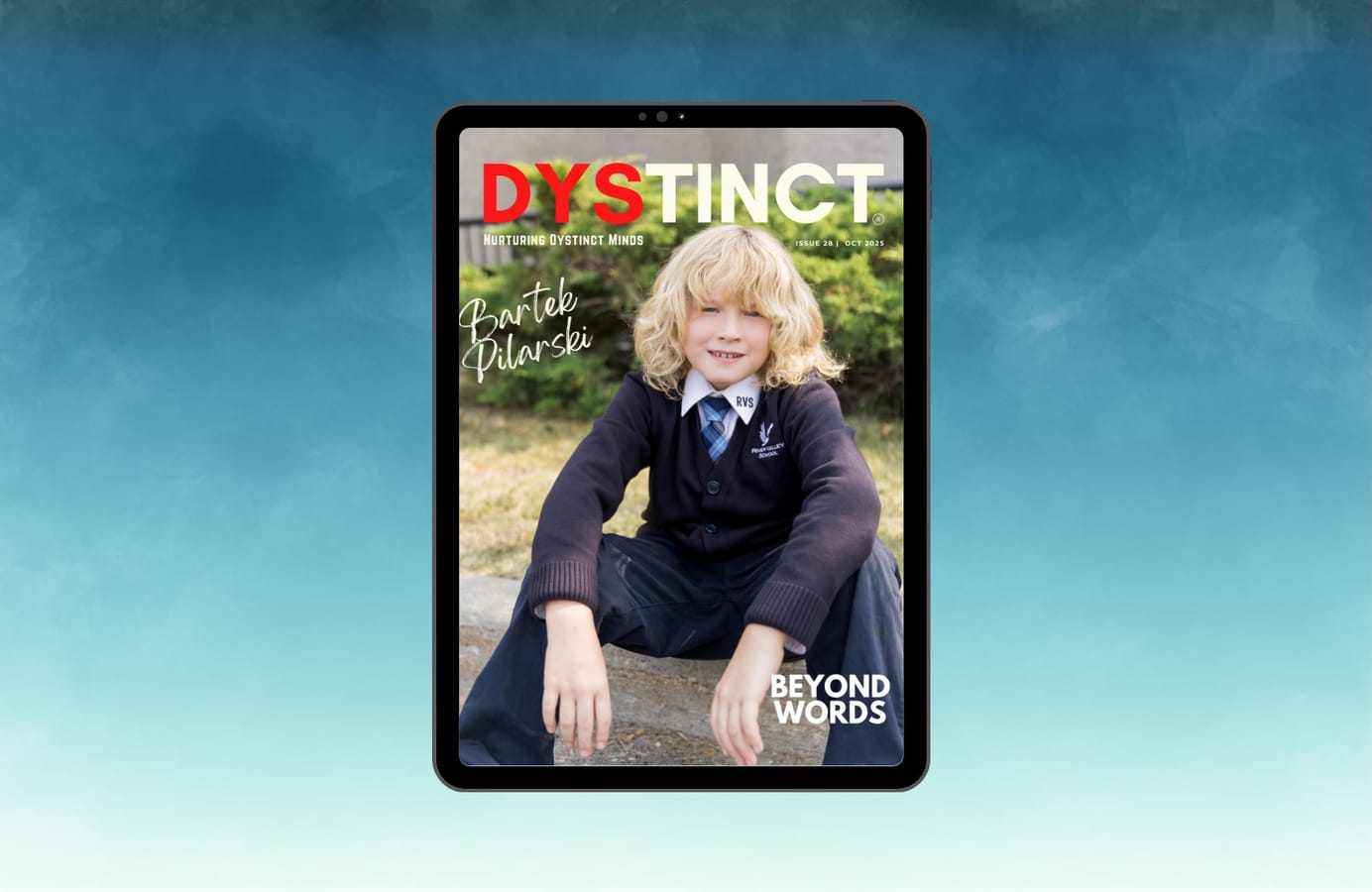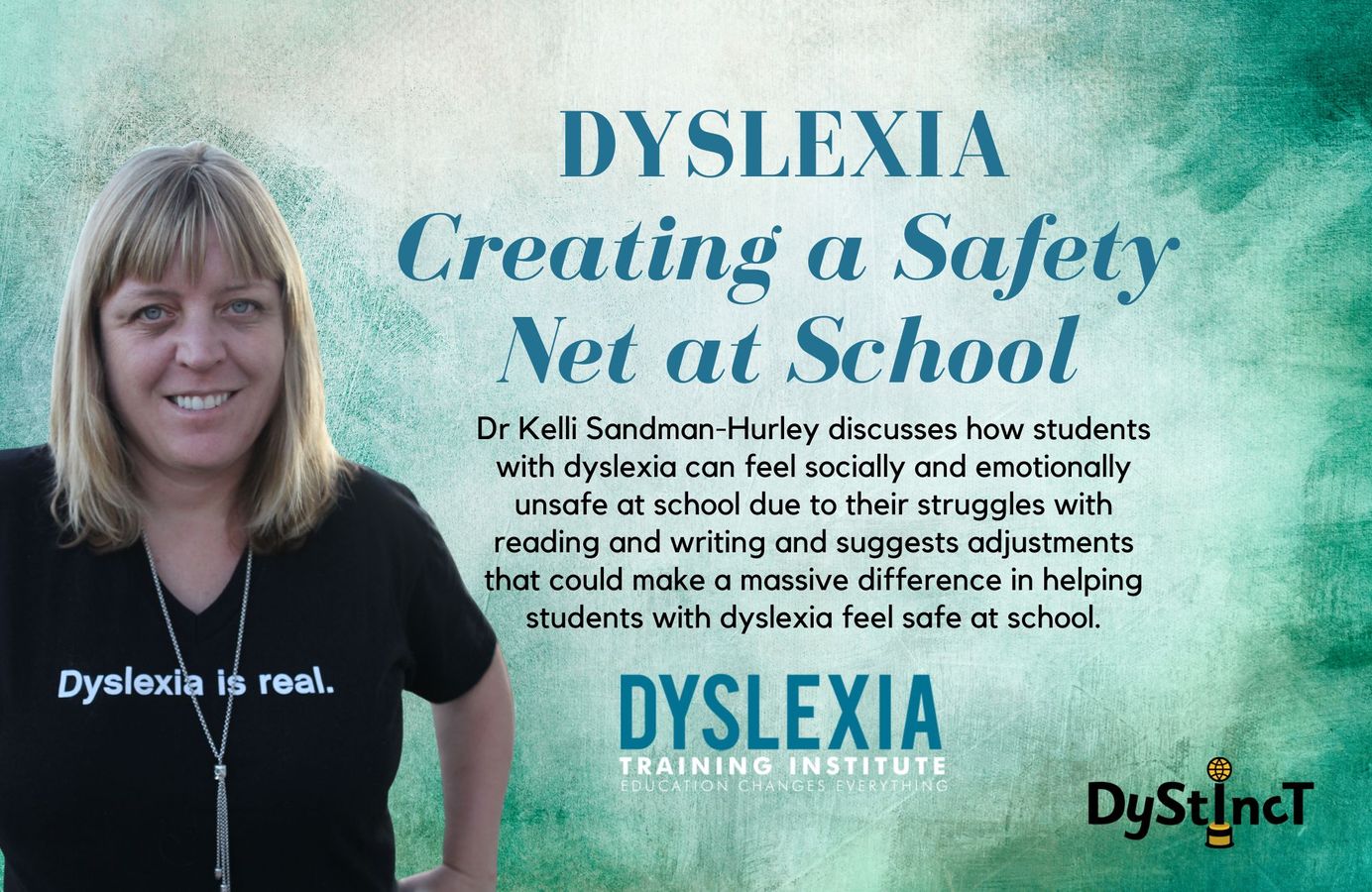
Issue 15: Dyslexia: Creating a Safety Net at School | Dr Kelli Sandman-Hurley
Dr Kelli Sandman-Hurley discusses how students with dyslexia can feel socially and emotionally unsafe at school due to their struggles with reading and writing and suggests adjustments that could make a massive difference in helping students with dyslexia feel safe at school.
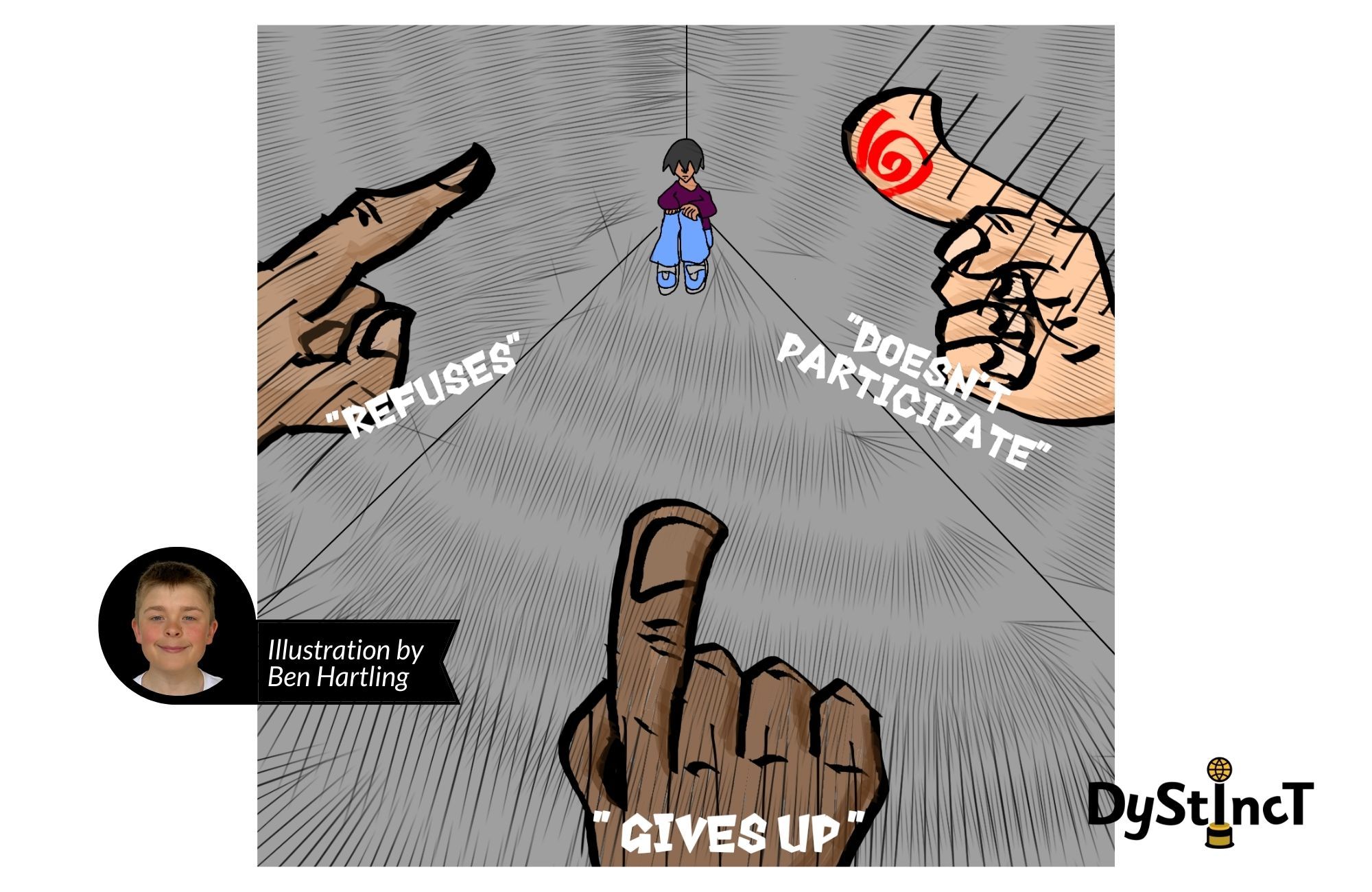
A child that cries every day as they go to school does not feel safe at school.
A child who misbehaves at school but not at home does not feel safe at school.
A child who feels physically ill Monday through Friday does not feel safe at school.
Every day many students with dyslexia walk through the doors of their classrooms, take a big deep breath in, and then let it all out.
They hope that on this day, they won’t be called on to read in front of their classmates.
They hope they won’t be called on to write on the board.
They hope that someone won’t suggest they are not trying hard enough.
They hope that someone doesn’t make comments about their accommodations or withhold them.
For these students, school is not a safe place for social and emotional health. But it could be, with just a few adjustments.
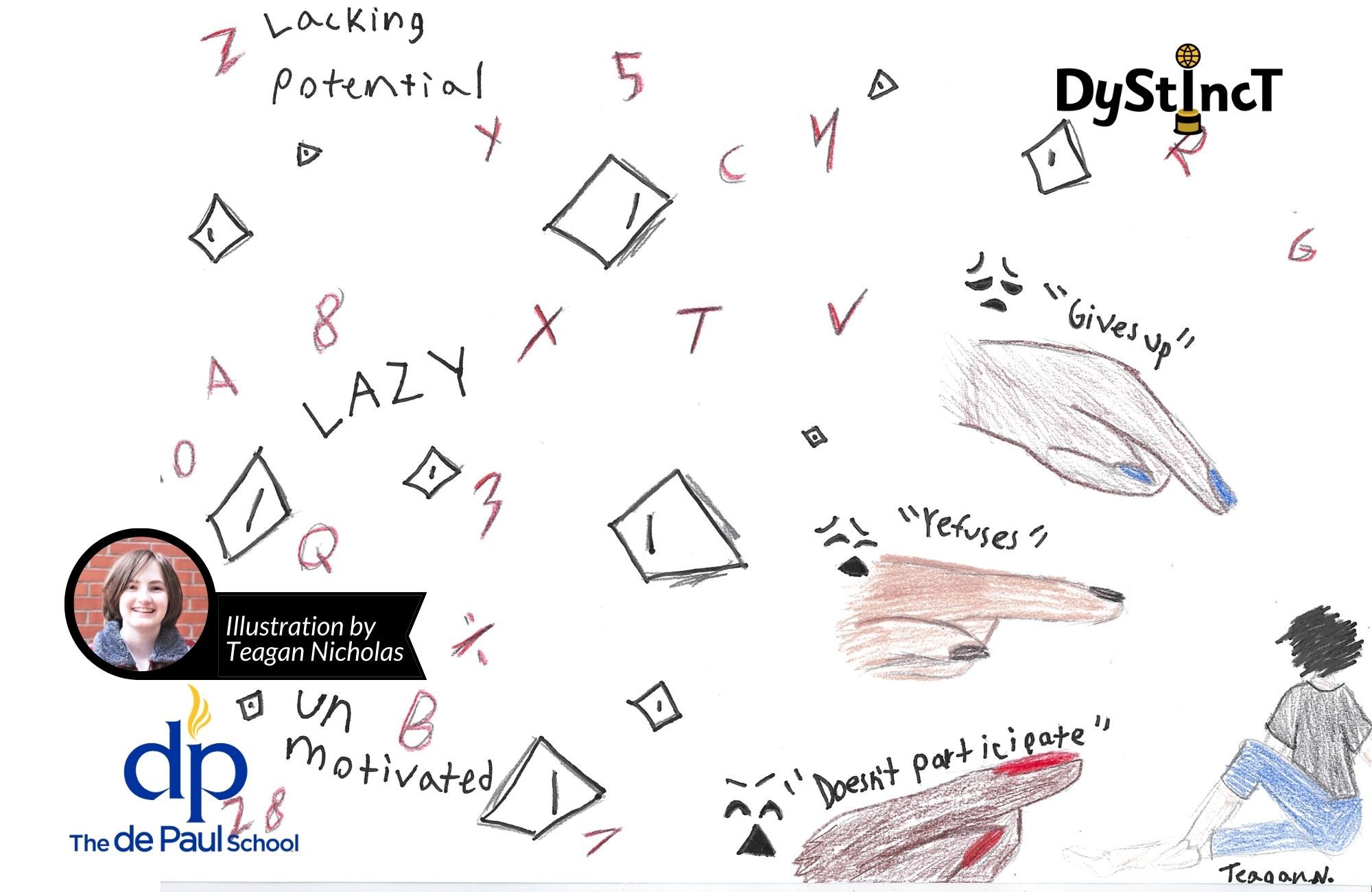
No Reading Out Loud – Ever!
No Reading Out Loud – Ever
I am adamant about this one. I interviewed 50 adults with dyslexia in my book The Adult Side of Dyslexia, and I asked them each to give me one word to describe what it felt like to read out loud. The words they used were torture, terrible, traumatizing, embarrassing and horrible. They could recount a time they had to read out loud as if it happened yesterday – even when it was 20 years ago. This is completely unnecessary. In fact, there is no pedagogical reason to have students read out loud, NONE. I wanted to find out why this is still done in classrooms, so I asked teachers to share why they still do it. Overwhelmingly, they shared that they do this for classroom management reasons. The need for classroom management should not outweigh the need for students to feel safe. However, if a student does raise their hand to read, then by all means, call on them. If a student raises their hand, they are signaling that they can do it. Then they need to be given the chance to show their classmates, their teachers and themselves that they can do it. In all other scenarios, just don’t do it.
This post is for paying subscribers only
SubscribeAlready have an account? Log in

